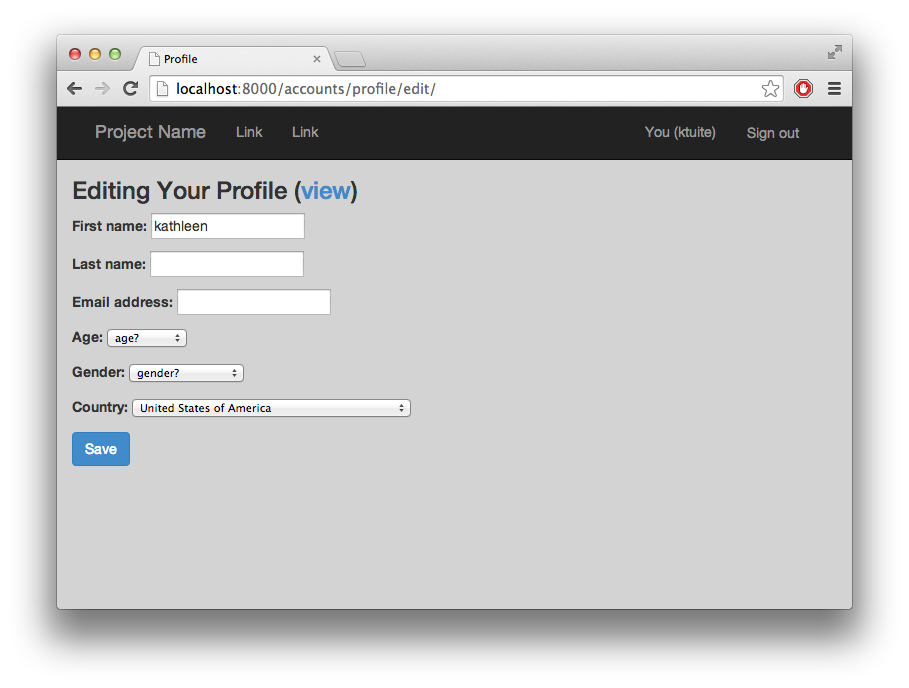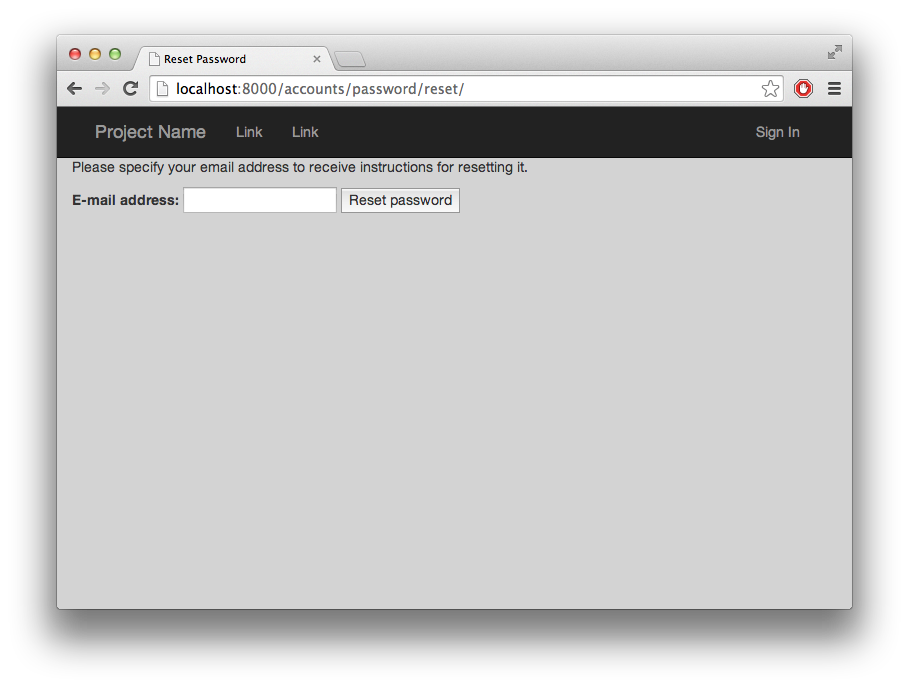Components:
- Login system (with pages for registering, signing in, and password recovery)
- Bootstrap CSS and JQuery Javascript
- Example urls, models, views
- Saving user data to media folder
Things to customize:
- Database: local sqlite file or real mysql server
- Email address for sending password recovery (I just use a Gmail account)
django-admin.py startproject django_base
cd django_base
python manage.py startapp custom_app
python manage.py runserver
- There are a lot of nested folders with the same names, now. The outer
django_base(the one that contains manage.py) can be named whatever you want now. I happened to start this project inside of a folder I already was calling something django-related. Pathnames from here on out are relative to the otherdjango_basefolder with manage.py in it.
- Add
django_baseto the list ofINCLUDED_APPS - Add
custom_appto list ofINCLUDED_APPS - Change database settings here (actually I left them as the default sqlite database for now)
- Create
django_base/static/anddjango_base/templates/directories for CSS, Javascript, and HTML- Put bootstrap and jquery files in
static - Create a
django_base/templates/base.htmlthat other templates will extend from
- Put bootstrap and jquery files in
- Create
custom_app/templates/custom_app/- HTML templates go here
- This directory is super redundant in its naming so that you can use templates from other apps
- Make a
custom_app/urls.py - Add
custom_appurls todjango_base/urls.py(I made the root of my site point to the urls incustom_app) - Add the actual url path/route for the first view/webpage
- Make a function for it in
custom_app/views.py - Make an html file in
custom_app/templates/custom_app/<myview>.htmlthat extendsbase.html
Step 1: Set up the database (let django automatically create user tables) and create a super user account
python manage.py syncdb
- Some of the views are things that django already handles and some are things I have to make myself.
- Most templates django doesn't really have alreadly (except for the admin password reset form) so I had to remake those.
- I had a version of all this code cobbled together, so I copied it and cleaned it up and made sure it all worked.
- make sure order of INSTALLED_APPS has our apps at the top so the django admin password reset doesnt clobber them
- Look in
django_base/models.py... there are some extra functions that tell django to automatically make this extra user information object when a new user is created. - After adding this and trying to edit my own profile, I got this error: User has no userprofile.
- It's a special extra field attached to my user, which was made before this extra info existed, so I just deleted the database, reran
syncdb, and remade my user.
- It's a special extra field attached to my user, which was made before this extra info existed, so I just deleted the database, reran
django_base/settings.py
- Where INSTALLED_APPS go, including the root app and any other apps (self-contained sub-projects or sub-urls) you make
- Where pretty much any and every setting goes, including database setup, password recovery email addresses, authentication keys for 3rd party things



